Description
The PTC (Positive Temperature Coefficient) heater applies high voltage battery power to multiple PTC thermistors inside the heater and uses the heat from the thermistors as a heat source for heating. In a condition that requires heating, a high voltage is applied and the blower converts cold air into warm air during operation.Removal

• When working on high voltage system, the work should be performed by technicians who have completed the relevant training. A lack of understanding of the high voltage system can lead to serious accidents due to electric shock or electric leakage.
• When working a high voltage system, the technician must be observed and aware of "High Voltage System General Safety Information and Caution". If not, it may cause serious accidents such as electric shock or short circuit.
• When working on high voltage system, make sure to check the Personal Protective Equipment (PPE) and high voltage shut-off procedures.
1.Shut off the high voltage circuit.(Refer to Heating, Ventilation and Air Conditioning - "High Voltage Shut off Procedure")
2.Remove the front console cover.(Refer to Body - "Front Console Cover")
3.Remove the crash pad center panel.(Refer to Body - "Crash Pad Panel")
4.Disconnect the duct sensor connector (A).
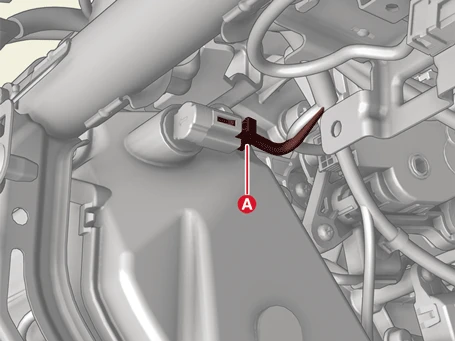
5.Remove the passenger's side shower duct (A) after removing the screws.
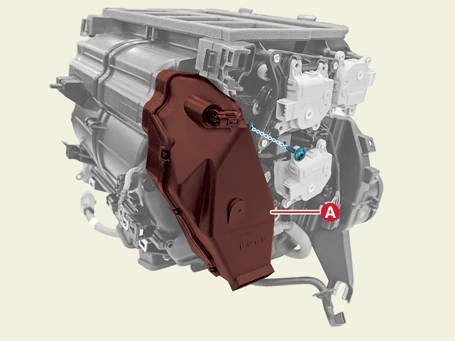
6.Disconnect the cable (B) connected to the vehicle body after disconnecting the PTC heater high voltage cable connector (A).
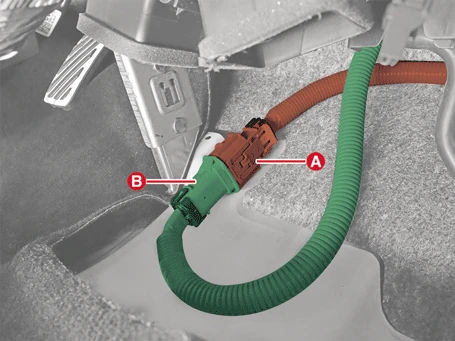
7.Remove the cable fixing clip (A) from the heater unit.
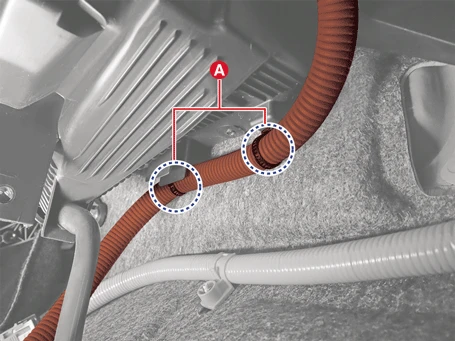
8.Disconnect the connector (A) and PTC heater signal wiring (B) from the heater unit.

9.Disconnect the PTC heater ground wire (A) after removing the bolts.
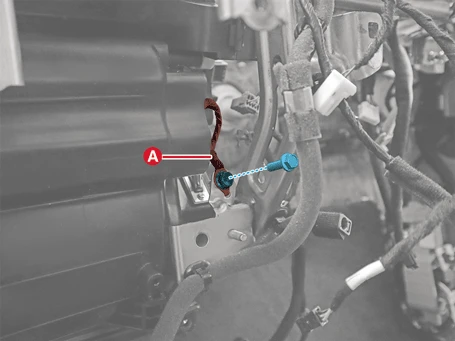
10.Remove the PTC heater (A) in the direction of the arrow after removing the screws.
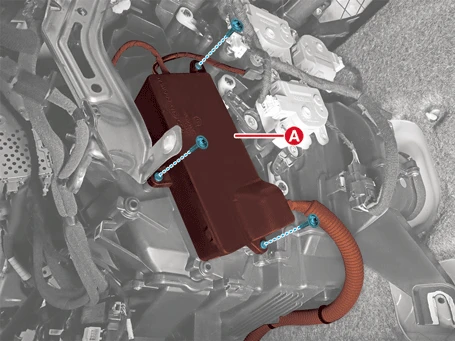
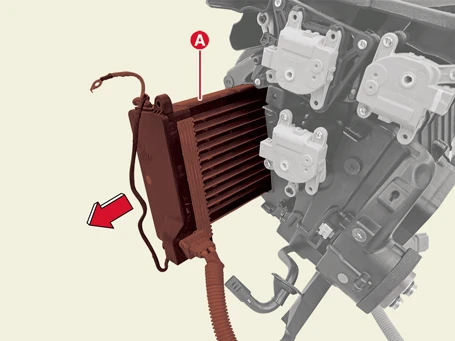
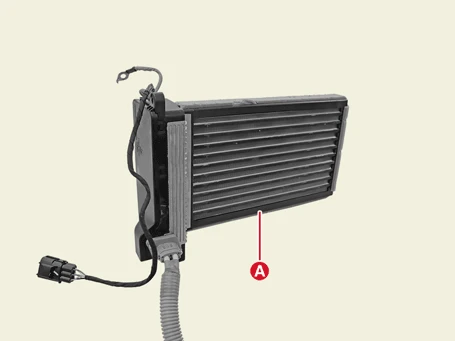
Installation

• When working on high voltage system, the work should be performed by technicians who have completed the relevant training. A lack of understanding of the high voltage system can lead to serious accidents due to electric shock or electric leakage.
• When working a high voltage system, the technician must be observed and aware of "High Voltage System General Safety Information and Caution". If not, it may cause serious accidents such as electric shock or short circuit.
• When working on high voltage system, make sure to check the Personal Protective Equipment (PPE) and high voltage shut-off procedures.
1.Install in reverse order of removal.
Inspection
1.Check if there is an output signal (actuation request) from the A/C controller.
2.Inspect the interlock with a KDS to see if there is a problem.
3.Check that low voltage (12.0 V) is supplied.
4.For inspection, refer to the pin information below.
[Main power connector]
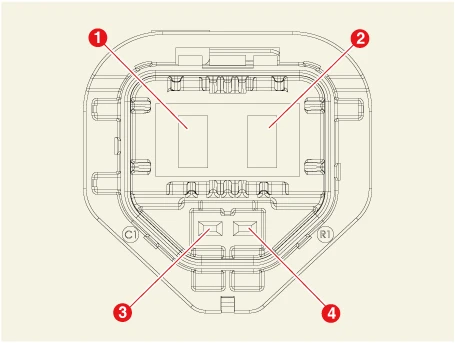
| Pin number | Function |
| 1 | HV ( - ) |
| 2 | HV ( + ) |
| 3 | Interlock ( + ) |
| 4 | Interlock ( - ) |
[Signal connector]
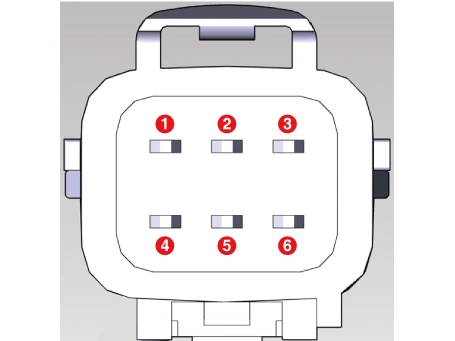
| Pin number | Function |
| 1 | IGN 3 |
| 2 | CAN HIGH |
| 3 | CAN LOW |
| 4 | Interlock ( + ) |
| 5 | Interlock ( - ) |
| 6 | Ground |